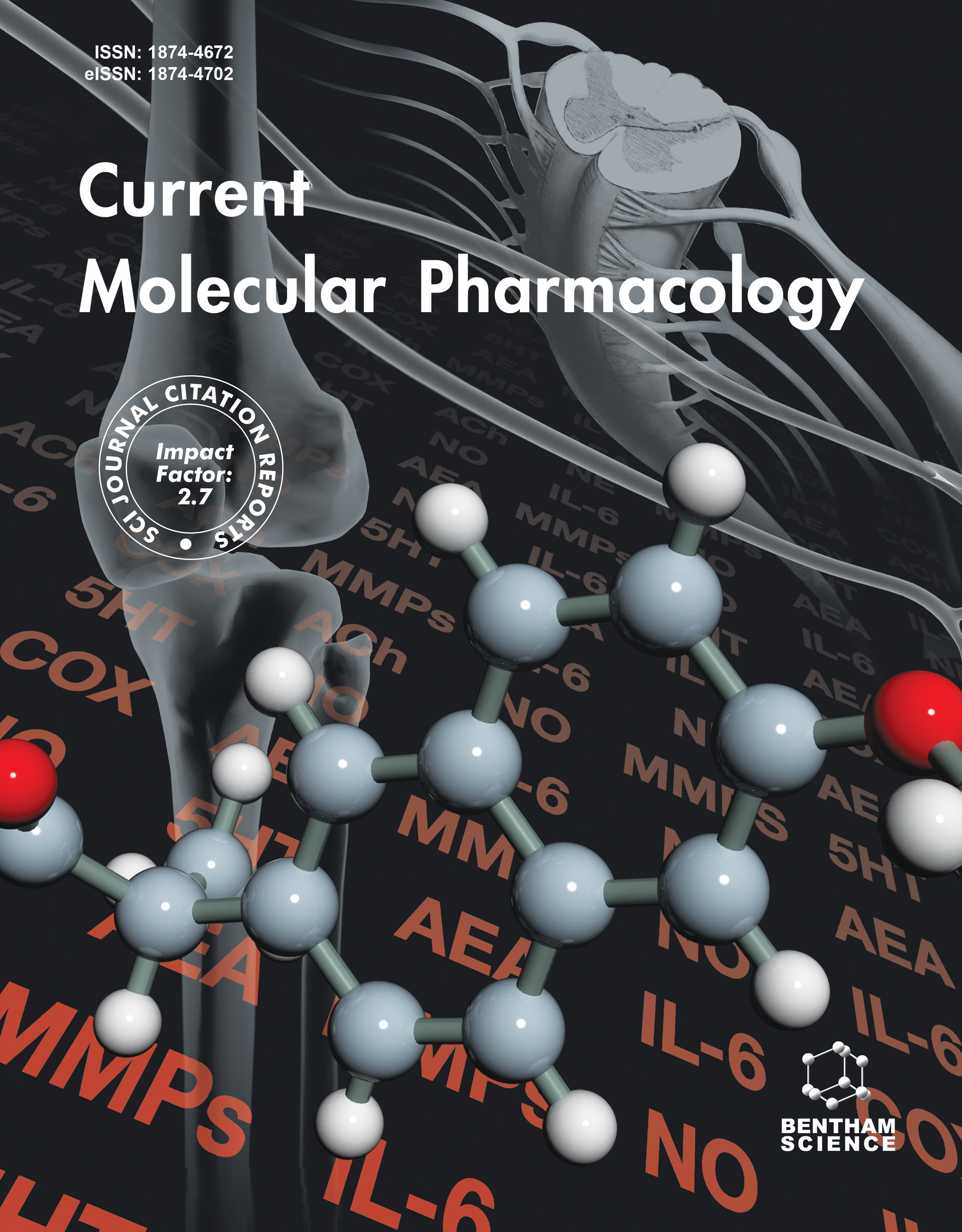- Home
- A-Z Publications
- Current Molecular Pharmacology
- Previous Issues
- Volume 4, Issue 2, 2011
Current Molecular Pharmacology - Volume 4, Issue 2, 2011
Volume 4, Issue 2, 2011
-
-
Editorial [Hot Topic: Evidence and Significance of Non-Targeted Effects of Ionizing Radiation (Guest Editor: Nobuyuki Hamada)]
More LessIonizing radiation has been indispensable to medical diagnosis and cancer therapy. Humans are also daily exposed to natural background low-level radiation. Despite a century having passed since the discovery of X-rays, the biological mechanism of radiation action remains incompletely understood. Over the last half-century, a central tenet in radiation biology has been that the nuclear DNA is the quintessential ‘target’ fo Read More
-
-
-
Signaling Pathways Underpinning the Manifestations of Ionizing Radiation-Induced Bystander Effects
More LessAuthors: Nobuyuki Hamada, Munetoshi Maeda, Kensuke Otsuka and Masanori TomitaFor nearly a century, ionizing radiation has been indispensable to medical diagnosis. Furthermore, various types of electromagnetic and particulate radiation have also been used in cancer therapy. However, the biological mechanism of radiation action remains incompletely understood. In this regard, a rapidly growing body of experimental evidence indicates that radiation exposure induces biological effects in cells whose nucle Read More
-
-
-
Radiation Induced Non-targeted Response: Mechanism and Potential Clinical Implications
More LessAuthors: Tom K. Hei, Hongning Zhou, Yunfei Chai, Brian Ponnaiya and Vladimir N. IvanovGenerations of students in radiation biology have been taught that heritable biological effects require direct damage to DNA. Radiation-induced non-targeted/bystander effects represent a paradigm shift in our understanding of the radiobiological effects of ionizing radiation in that extranuclear and extracellular effects may also contribute to the biological consequences of exposure to low doses of radiation. Althoug Read More
-
-
-
In Vivo Space Radiation-Induced Non-Targeted Responses: Late Effects on Molecular Signaling in Mitochondria
More LessAuthors: Mohit R. Jain, Min Li, Wei Chen, Tong Liu, Sonia M. de Toledo, Badri N. Pandey, Hong Li, Bernard M. Rabin and Edouard I. AzzamThe lack of clear knowledge about space radiation-induced biological effects has been singled out as the most important factor limiting the prediction of radiation risk associated with human space exploration. The expression of space radiation-induced non-targeted effects is thought to impact our understanding of the health risks associated with exposure to low fluences of particulate radiation encountered by astronaut Read More
-
-
-
Role of DNA Damage and Epigenetic DNA Methylation Changes in Radiation-Induced Genomic Instability and Bystander Effects in Germline In Vivo
More LessAuthors: Jan Tamminga and Olga KovalchukIonizing radiation (IR) is a curative treatment for many human malignancies, an important diagnostic modality, and a pivotal preparative regimen for bone marrow transplantation. On the other hand, IR is a potent damaging agent that can affect a variety of processes in directly exposed cells, in their descendents, and in neighboring un-irradiated naïve ‘bystander’ cells. Accumulation of DNA damage caused by IR in conjunction Read More
-
-
-
Nitric Oxide is a Key Molecule Serving as a Bridge between Radiation-Induced Bystander and Adaptive Responses
More LessAuthors: Hideki Matsumoto, Masanori Tomita, Kensuke Otsuka, Masanori Hatashita and Nobuyuki HamadaA classical paradigm of radiation biology asserts “targeted effect” that all radiation effects on cells, tissues and organisms are due to the direct action of radiation. However, over the past two decades, a paradigm of radiation biology has undergone a shift away from “targeted effect” relationships and towards complex ongoing “intra- and inter-cellular responses”, which involve not only targeted but also non-targeted o Read More
-
-
-
Communicating Non-Targeted Effects of Ionizing Radiation to Achieve Adaptive Homeostasis in Tissues
More LessNon-targeted effects, i.e., those responses in cells or tissues that were not subject to energy deposition events after localized exposure to ionizing radiation, are well established. While they are not a universal phenotype, when they do occur they can be associated with subsequent tissue or whole body responses. Here it is argued that non-targeted effects are a tissue level response to restore equilibrium within an organ syst Read More
-
-
-
Inhibitory Smad7: Emerging Roles in Health and Disease
More LessSmad7 is an inhibitory Smad protein that blocks Transforming Growth Factor-beta (TGF-β) signaling through a negative feedback loop, also capable of mediating the crosstalk between TGF-β and other signaling pathways. Smad7 mRNA and protein levels are upregulated after TGF-β signaling; subsequently, Smad7 protein binds TGF-β type I receptor blocking R-Smad phosphorylation and eventually TGF-β signaling. Because of t Read More
-
Most Read This Month
Article
content/journals/cmp
Journal
10
5
false
en


